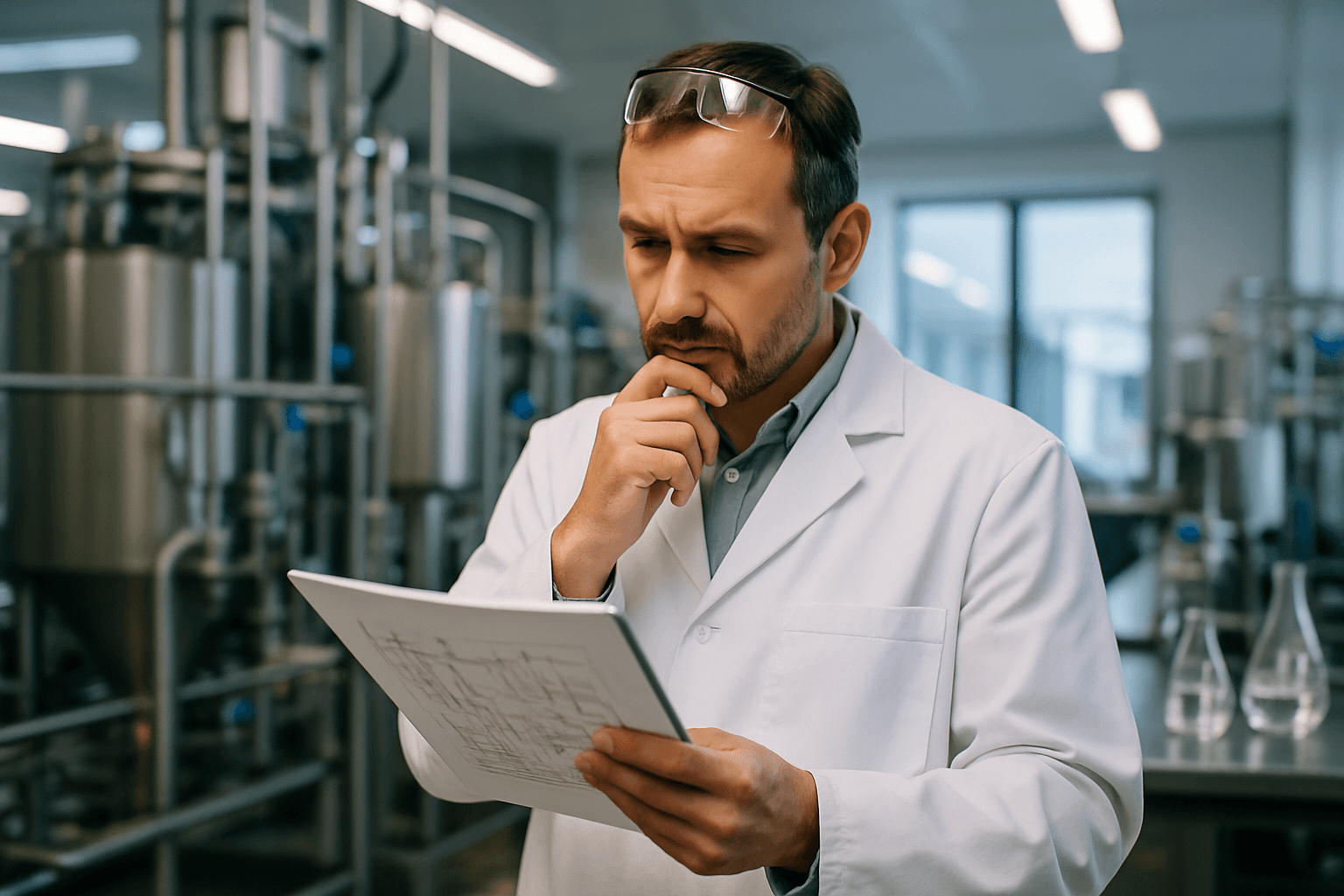Food processing, a complex interplay of physical and chemical transformations, relies heavily on precise engineering principles to ensure product quality, safety, and efficiency. At its core, chemical and food engineering utilizes heat and mass balance calculations to design, optimize, and control various unit operations, from pasteurization to drying and evaporation. However, real-world systems are incredibly intricate, necessitating a range of simplifying assumptions to make these calculations tractable and practical. Understanding these assumptions is crucial for accurate process design and troubleshooting.
This article delves into the fundamental assumptions commonly employed in heat and mass balance calculations across key food processing applications, highlighting their significance and potential limitations.
Core Assumptions in Food Processing Balances
Regardless of the specific unit operation, several general assumptions often form the bedrock of heat and mass balance calculations in food processing:
Steady-State Operation
One of the most frequent and significant assumptions is that the system operates at a “steady state.” This means that all process variables, such as temperature, flow rates, pressure, and composition, do not change with time. Inputs equal outputs, and there is no accumulation or depletion of mass or energy within the system boundaries. This simplification greatly reduces the complexity of differential equations to algebraic equations, making calculations far more manageable. While food processing often involves transient periods (e.g., startup, shutdown), steady-state analysis provides valuable insights into normal operating conditions.
Negligible Heat Losses
For many industrial processes, it is assumed that heat losses to the surroundings (through insulation, convection, or radiation from equipment surfaces) are either negligible or can be accounted for by a fixed percentage. While ideal insulation is rarely achieved, this assumption simplifies energy balance equations by eliminating terms for ambient heat exchange. In reality, significant heat losses can impact energy efficiency and product temperature control.
Constant Thermophysical Properties
Food materials are complex, and their thermophysical properties (e.g., specific heat capacity, thermal conductivity, density, viscosity) can change significantly with temperature, pressure, and composition (e.g., moisture content). For simplification, these properties are often assumed to be constant over the operating range or an average value is used. For instance, in extrusion, calculating heat capacity might involve using a weighted average based on the weight fractions of carbohydrates, protein, fat, ash, and water. However, substantial variations in properties can lead to inaccuracies, particularly for processes involving large temperature swings or significant compositional changes.
Ideal Mixing or Uniform Composition
In many liquid-phase processes, perfect mixing is assumed, implying that the fluid composition and temperature are uniform throughout the mixing vessel or across a flow cross-section. This simplifies mass and energy distribution but may not hold true for highly viscous fluids or short residence times. For solid foods, homogeneity and continuity are often assumed, treating porous media with effective or apparent thermophysical properties.
No Chemical Reactions or Negligible Reaction Enthalpy
Unless the focus is on a specific reaction (e.g., protein denaturation, starch gelatinization), it is often assumed that no chemical reactions occur within the system, or if they do, their associated enthalpy changes are negligible compared to heat transfer effects. This simplifies the energy balance by removing reaction heat terms. However, in processes like cooking or fermentation, reaction enthalpies can be significant and must be considered.
Specific Assumptions in Key Food Processing Operations
Beyond the general assumptions, specific unit operations introduce their own sets of common simplifications:
Evaporation Systems
Evaporation is used to concentrate liquid foods by removing water as vapor, crucial for products like concentrated fruit juices, milk, and sugar solutions.
Negligible Boiling Point Elevation (BPE)
For dilute solutions, the boiling point of the solution is often assumed to be the same as pure water at the operating pressure. However, as solutions concentrate (e.g., sugar or salt solutions), the boiling point rises due to the presence of dissolved solids. Neglecting BPE can lead to overestimation of temperature driving forces and underestimation of required energy. Multi-effect evaporators are designed to minimize the impact of BPE on efficiency.
Constant Latent Heat of Evaporation
The latent heat required to vaporize water is often assumed constant, although it can vary slightly with pressure and temperature.
Vapour and Product in Thermal Equilibrium
It is often assumed that the vapor temperature is equal to the product’s boiling temperature, meaning they are in thermal equilibrium.
Negligible Feed Heating Load
In some cases, the heat required to bring the feed solution up to its boiling temperature is considered negligible compared to the latent heat required for vapor formation.
Negligible Heat Losses and Boiling Point Elevation
In multi-effect evaporators, sometimes heat losses and boiling point elevation are assumed to be negligible for simplified analysis.
Drying Processes
Drying involves removing moisture from food, typically through evaporation, to preserve it and extend shelf life. This process is governed by coupled heat and mass transfer.
Moisture Migration by Diffusion
During the “falling rate period” of drying, it is assumed that moisture movement from the interior to the surface of the food is primarily driven by diffusion due to concentration gradients. This internal transport becomes the limiting factor as surface moisture depletes.
Constant Drying Rate Period (Free Water Evaporation)
In the initial stages of drying (the “constant rate period”), it’s often assumed that the food surface remains saturated with moisture, and evaporation proceeds as if from a free water surface. The rate of water removal stays constant as long as there is sufficient moisture at the surface.
Uniform Temperature and Moisture Distribution
For modeling, especially in simplified cases, internal temperature and moisture content within the food item are sometimes assumed to be uniform at any given time, simplifying the heat and mass transfer equations. However, in reality, significant gradients exist.
Negligible Shrinkage
Changes in the physical dimensions (shrinkage) of food during drying can be substantial, affecting heat and mass transfer areas. For simplicity, these changes are often ignored or assumed to be negligible in basic models.
Heat Exchanger Design
Heat exchangers are fundamental for heating or cooling food products, such as in pasteurization or sterilization.
Overall Heat Transfer Coefficient (U) is Constant
The overall heat transfer coefficient, U, which accounts for conductive and convective resistances, is often assumed to be constant throughout the heat exchanger. In practice, U can vary with temperature, flow rate, and fouling.
No Phase Change (Unless Designed For)
For sensible heating or cooling, it’s assumed that no phase changes (e.g., boiling, condensation, freezing) occur within the fluids unless the heat exchanger is specifically designed as a condenser, boiler, or evaporator.
Negligible Kinetic and Potential Energy Changes
In the energy balance for heat exchangers, changes in kinetic and potential energy of the fluid streams are typically considered negligible compared to changes in enthalpy.
No Fouling or Constant Fouling Resistance
Fouling, the buildup of deposits on heat transfer surfaces, significantly reduces efficiency over time. In design, a constant fouling resistance might be assumed, or initial calculations might neglect it for clean conditions.
Pasteurization Processes
Pasteurization is a mild heat treatment (typically below 100 °C) applied to foods to eliminate pathogens and extend shelf life, widely used for milk and fruit juices.
Target Microorganism Inactivation Kinetics (D and z values)
Calculations for pasteurization effectiveness rely on specific “D-values” (decimal reduction time – time to kill 90% of a microbial population at a given temperature) and “z-values” (temperature change required for a tenfold change in D-value) for target microorganisms. These values are assumed to be constant for the food matrix and temperature range considered. The minimum pasteurization conditions, for example, for milk, are designed to achieve at least a 5 log₁₀ reduction of Coxiella burnetii.
Uniform Heat Penetration
It is assumed that all particles of the food reach the target temperature for the required duration to ensure adequate microbial inactivation. This implies uniform heat penetration throughout the product, which can be challenging in viscous foods or large containers.
Negligible Impact on Product Quality
While a primary goal of pasteurization is to minimize changes to nutritional and sensory qualities, calculations for microbial kill often assume that the heat treatment is sufficient for safety without explicitly quantifying quality degradation during the initial design phase.
The Role and Limitations of Assumptions
Assumptions serve as necessary simplifications to transform complex physical phenomena into solvable mathematical models. They enable engineers to perform practical calculations, design equipment, and predict process outcomes without needing to solve intractable sets of differential equations.
However, every assumption introduces a degree of idealization, meaning the calculated results are only as accurate as the assumptions themselves. Deviations from these assumptions in real-world operations can lead to:
- Energy Inefficiency: Underestimating heat losses or boiling point elevation.
- Product Quality Issues: Non-uniform heating leading to over-processing in some areas and under-processing in others.
- Safety Concerns: Insufficient microbial inactivation if heat penetration is not as assumed.
- Incorrect Equipment Sizing: Leading to under- or oversized equipment.
Therefore, while assumptions are indispensable, engineers must critically evaluate their validity for each specific application, often employing safety factors, experimental validation, or more advanced computational modeling (e.g., Computational Fluid Dynamics, CFD) for complex scenarios. The judicious application and understanding of these assumptions are key to successful food processing design and operation.

